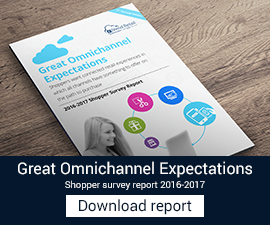After so many months of wait, iVend Retail 5.6 has finally arrived. The release is scheduled for 7th August 2012. While few of our partners and certified consultants are already using the beta release, some of the cool features are listed below for everyone to get a glimpse on the latest innovations. A video is also created. Have a look.
iVend Stand-Alone
iVend Stand-Alone runs independently without the need for an ERP at the backend. Retailers can now manage their entire retail operations just with iVend Retail Suite without having to implement an ERP.
User Training Mode
User Training Mode has been introduced in iVend to make iVend more users friendly. A new user can work in the training environment and learn to use the functionalities of iVend Retail better. The production environment however, remains unaffected by user activities in the training environment.
Discount Group Setup
Earlier in Ivend, Discount was defined for a single Discount field. With Ivend 5.6, Discount Group setup has been introduced where Discount field has been categorized into four types of Discount Group.
- Manual Discount Group
- System Discount Group
- Coupon Discount Group
- Promotion Discount Group
Depending on the grouping done, the user can determine the relationship of a particular group with the next Discount Group.
Custom Transaction Info Grid
Custom Transaction information can now be set individually for different store(s) using Custom Transaction Info Grid option in management console. This would enable users to setup the different button panel for individual stores.
Coupons
iVend Coupons are vouchers entitling the holder to a discount off a particular product(s). It is a promotional tool that can be used to get discounts while purchasing goods or services. Generally coupons are classified into Manufacturer and Store issued coupons, however in iVend treatment for both of these coupon types remains same and depends on the coupon setup.
Promotion – Bonus Buys
iVend Promotion engine are used to handle complex promotion scenarios using Buy and Get conditions as means to define the prerequisites set by the customer. Some of the promotions that can be setup are
- Buy X and get X free
- Buy X and get Y free
- Buy X and get discount on any item from Product Group Y
- Buy N quantity from Product Group X and get discount on any item of Product Group Y
- Buy N quantity from Product Group X of worth R and get discount on any item of Product Group Y
- Buy any 5 Quantity and get X percent discounts.
- Get X discount percent on the entire sale if Bill values exceeds N amount.
- Get Gift Certificate /Coupon/Loyalty points if you buy item/item group X worth R.
Tax Condition Setup
Using Tax Condition setup, a user can setup different Tax Conditions based on different parameters like Customer/Customer Group, Product/Product Group/Product Class, Warehouse/Store Group and Shipping Conditions etc.
Store Group
Store group provides the flexibility of grouping the multiple stores based on their pricing, taxation and inventory needs.
- Pricing Store Group: Price list can be attached to a pricing store group and therefore all the stores falling under this group would have a same price list applicable.
- Taxation Store Group: Stores can be group based on their Taxation and then this store group can be used to setup different Tax Condition within iVend.
- Inventory Store Group: Different warehouses can be clubbed together using an Inventory store group. Store would only be able to see the inventory or do inventory transactions with the stores/warehouses which are in his inventory store group or the stores/warehouses which are not part of any inventory store group.
Import/Export Data
Import /Export of Data templates can be done in iVend using Import/Export data option. Forty two templates are available for import/export in iVend. The default location for these templates is Ivend Retail Installation folderàManagement ConsoleàImport Templates.
Print Profile Enhancements
The user can specify report printing option(s) (xml report, crystal report, printer selection on runtime) using Print Profile option.
Business Date Validation
On enabling this, the user would not be allowed to login in iVend POS if the system date and the business date are not same.
Force Clock Out at EOD
If a user does not clock out from Point Of Sale, on commencement of the End of Day process, the user is force clocked out.
Display Loyalty Details under Customer Information Panel
At Point of Sale, Loyalty details for the selected customer is available under Customer Information Panel. Loyalty details include Loyalty Points, Loyalty slab etc.
Sale Order Cancellation
Cancellation of Sale Order at Point Of Sale can be done using Cancel option introduced in iVend 5.6. Previously Sale Order was cancelled using Sale Edit option.
Changes in the serial scanning on GRPO
While doing a GRPO, instead of manually entering the serial number(s) for the products, the serial number(s) can be directly scanned by the user.
Fulfillment Address Integration with SAP Business One documents
The address captured on fulfillment in iVend will be populated in delivery address of corresponding document of SAP Business One. Since in iVend user can attach multiple fulfillment(s) on same document, therefore only first fulfillment address will be integrated with SAP Business One.





